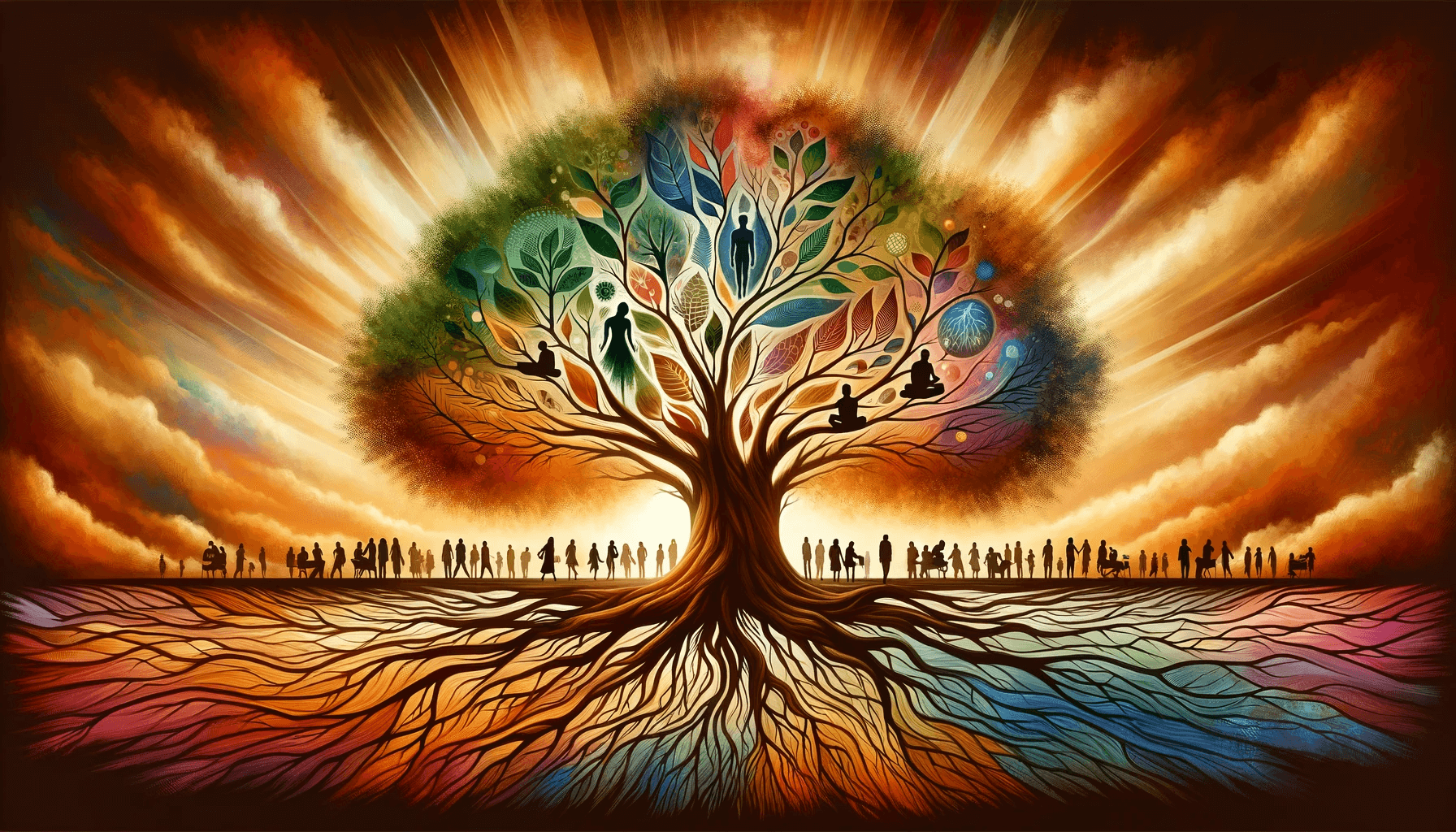Sponsor Awaken Your Great Self
Table of Contents
Introduction to Dry Needling vs Acupuncture
When it comes to alternative therapies, dry needling, and acupuncture are two popular treatments that often get confused with each other. While they may appear similar, key differences set them apart. This article will explore what dry needling and acupuncture are, their benefits, and who can benefit from each therapy. By the end, you will better understand which treatment may be right for you.
What is Dry Needling?
Dry needling is used by physical therapists, chiropractors, and other healthcare professionals to relieve pain and stimulate healing. It involves inserting thin needles into trigger points or tight muscles to release tension and improve blood flow. Unlike acupuncture, which is rooted in traditional Chinese medicine, dry needling is based on Western anatomical and neurophysiological principles.
One of the primary goals of dry needling is to target myofascial trigger points. These trigger points are tight knots within a muscle that can cause referred pain and restricted movement. By inserting a needle directly into these trigger points, the therapist can elicit a twitch response, which helps relax the muscle and alleviate pain.
What is Acupuncture?
Acupuncture is an ancient Chinese healing practice that originated thousands of years ago. It is based on balancing the flow of energy, known as Qi, throughout the body. According to traditional Chinese medicine, when Qi becomes blocked or imbalanced, it can lead to pain and illness. Acupuncture aims to restore the balance of Qi by inserting thin needles into specific points along the body’s meridians.
Unlike dry needling, which focuses on trigger points and muscles, acupuncture takes a more holistic approach by targeting the body’s energy pathways. The acupuncturist carefully selects specific points to address the underlying imbalances and promote overall well-being. Acupuncture is often used to treat a wide range of conditions, including pain, stress, digestive disorders, and infertility.
Key Differences Between Dry Needling and Acupuncture
While both dry needling and acupuncture involve the insertion of thin needles, several key differences exist between the two therapies.
Firstly, the underlying theories and philosophies behind dry needling and acupuncture are distinct. Dry needling is based on Western medical principles and targets trigger points and muscles. Acupuncture, on the other hand, is rooted in traditional Chinese medicine and aims to balance the body’s energy flow.
Secondly, the needles used in dry needling and acupuncture are slightly different. Dry needling primarily uses solid filiform needles, similar to acupuncture needles, but does not have a hollow core. Acupuncture needles are usually thinner and more flexible than those used in dry needling.
Lastly, the training and qualifications required for dry needling and acupuncture practitioners differ. Dry needling is typically performed by physical therapists, chiropractors, or other healthcare professionals with advanced training in the technique. Acupuncture, however, requires specialized training and certification in traditional Chinese medicine.
Similarities Between Dry Needling and Acupuncture
Dry needling and acupuncture, while distinct practices share several similarities:
- Technique: Both involve inserting thin needles into the skin. The needles used are often similar in size and shape.
- Trigger Points: Both techniques target specific points on the body. In acupuncture, these are known as acupuncture points, believed to be connected to energy pathways. In dry needling, the focus is on trigger points, which are tight areas within muscle tissue.
- Pain Relief and Muscle Function: Each method relieves pain and improves muscle function. They are often sought out for conditions like chronic pain, muscle tension, and stress-related symptoms.
- Holistic Approach: Both practices can be part of a broader, holistic approach to health, emphasizing the body’s ability to heal itself.
- Ancient Roots and Modern Adaptation: Acupuncture has ancient roots in traditional Chinese medicine, while dry needling is a more modern adaptation but borrows techniques from traditional acupuncture.
Despite these similarities, it’s important to note that the underlying philosophies and specific methodologies can be quite different. Acupuncture is based on traditional Chinese medicine principles, balancing the body’s energy flow. On the other hand, dry needling is primarily based on Western anatomical and neurophysiological principles.
Benefits of Dry Needling
Dry needling offers several potential benefits, particularly physical therapy and pain management. Some of the key benefits include:
- Pain Relief: One of the most notable benefits of dry needling is its effectiveness in reducing pain, including chronic pain conditions like fibromyalgia, back pain, and myofascial pain syndrome.
- Reducing Muscle Tension: Dry needling can help relax tight muscle bands or knots, known as trigger points, thereby reducing muscle tension and improving flexibility.
- Improving Range of Motion: By releasing trigger points, dry needling can improve joint range of motion, particularly beneficial for athletes or individuals with movement restrictions.
- Enhancing Muscle Function: It can help restore normal muscle function by disrupting dysfunctional motor endplates, where nerve impulses are transmitted to muscles.
- Speeding Up Recovery: Athletes often use dry needling to speed up recovery from injuries by improving circulation to the affected area and facilitating the healing process.
- Complementary to Other Treatments: Dry needling can be used with other physical therapy techniques, providing a comprehensive approach to treating musculoskeletal conditions.
- Minimal Side Effects: Unlike other treatments, dry needling typically has fewer side effects. The most common side effects are mild and may include soreness at the needle site or minor bleeding.
- Helps in Chronic Conditions Management: It is often used as part of a broader management plan for conditions like arthritis, neuropathy, and sciatica, providing symptomatic relief.
Benefits of Acupuncture
Acupuncture, a key component of traditional Chinese medicine, offers a range of benefits, many of which are supported by both historical use and modern research:
- Pain Management: Acupuncture is widely recognized for its effectiveness in managing various types of pain, including chronic back pain, neck pain, osteoarthritis/knee pain, and headaches, including tension headaches and migraines.
- Stress and Anxiety Reduction: Acupuncture can help reduce stress and anxiety levels. It’s believed to modulate the nervous system, thereby influencing the production of mood-changing chemicals like endorphins.
- Improved Sleep: It can help with insomnia and other sleep disturbances by promoting relaxation and addressing the underlying imbalances causing sleep issues.
- Enhanced Digestive Function: Acupuncture treats digestive disorders, from common issues like constipation and indigestion to more complex conditions like irritable bowel syndrome.
- Relief from Allergies: Some people find acupuncture helpful in managing symptoms of allergies, such as hay fever, without the side effects often associated with medication.
- Boost in Immune System: Regular acupuncture sessions enhance the immune system’s function, helping the body resist or fight illnesses more effectively.
- Improved Energy and Well-Being: Many patients report a feeling of increased energy and overall well-being following acupuncture treatment, possibly due to improved balance in the body’s energy systems.
- Women’s Health: Acupuncture can be beneficial in managing menstrual cramps menopausal symptoms, and may assist in fertility treatments by improving blood flow to reproductive organs.
- Chemotherapy Recovery: For cancer patients undergoing chemotherapy, acupuncture may help in reducing side effects like nausea and vomiting.
- Neurological Benefits: There’s growing interest in acupuncture’s potential to treat neurological conditions like Parkinson’s disease and post-stroke rehabilitation.
Who can Benefit from Dry Needling?
Dry needling can benefit individuals, including those with musculoskeletal pain, athletes looking to enhance performance, and recovering from injuries. It can be particularly effective for chronic back, neck, shoulder, and headaches.
If you have muscle tightness, trigger points, or a restricted range of motion, dry needling may be a suitable treatment option. However, it is essential to consult with a qualified healthcare professional to determine if dry needling is appropriate for your specific condition.
Who can Benefit from Acupuncture?
Acupuncture can benefit individuals with a wide range of health concerns. Whether you seek pain relief, stress reduction, improved sleep, or overall wellness, acupuncture may be a suitable option. It is commonly used to address conditions such as chronic pain, anxiety, depression, digestive disorders, hormonal imbalances, and fertility issues.
Additionally, acupuncture can benefit those looking to enhance their general well-being and maintain optimal health. It can help boost the immune system, improve energy levels, and promote balance and harmony within the body.
Choosing Between Dry Needling and Acupuncture
When choosing between dry needling and acupuncture, there are a few factors to consider. Firstly, understanding your specific condition and treatment goals is crucial. Dry needling may be more appropriate if you have musculoskeletal pain or muscle-related issues. If you seek a holistic approach that addresses physical and energetic imbalances, acupuncture may be a better fit.
Secondly, finding a qualified practitioner with experience and expertise in the chosen therapy is important. Whether you opt for dry needling or acupuncture, ensure the practitioner is licensed, trained, and follows proper safety protocols.
Lastly, personal preference and comfort should also play a role in your decision-making process. Some individuals may prefer the Western scientific approach of dry needling, while others may resonate with the ancient wisdom and holistic principles of acupuncture.
Safety Considerations for Dry Needling and Acupuncture
Both dry needling and acupuncture are considered safe when performed by qualified professionals. However, as with any medical procedure, some safety considerations must be remembered.
It is essential to choose a practitioner who follows strict hygiene and sterilization practices to minimize the risk of infection. Additionally, if you have any underlying health conditions or are taking medications, it is crucial to inform the practitioner before undergoing treatment. They can assess whether there are any contraindications or modifications needed to ensure your safety.
If you are pregnant or have a bleeding disorder, it is essential to consult with your healthcare provider before considering either dry needling or acupuncture.
Conclusion
Dry needling and acupuncture offer unique benefits and can effectively treat various conditions. Dry needling targets trigger points and tight muscles, while acupuncture restores energy balance throughout the body. Understanding your specific condition, treatment goals, and personal preferences will help guide your decision between the two therapies.
Regardless of which therapy you choose, it is important to consult with a qualified practitioner who can assess your individual needs and provide safe and effective treatment. Remember to communicate openly with your practitioner and discuss any concerns or questions.
Whether you opt for dry needling or acupuncture, these therapies have the potential to enhance your well-being and support your journey toward optimal health.
CTA: If you are considering dry needling or acupuncture, consult a qualified healthcare professional to determine which therapy is right for you.




